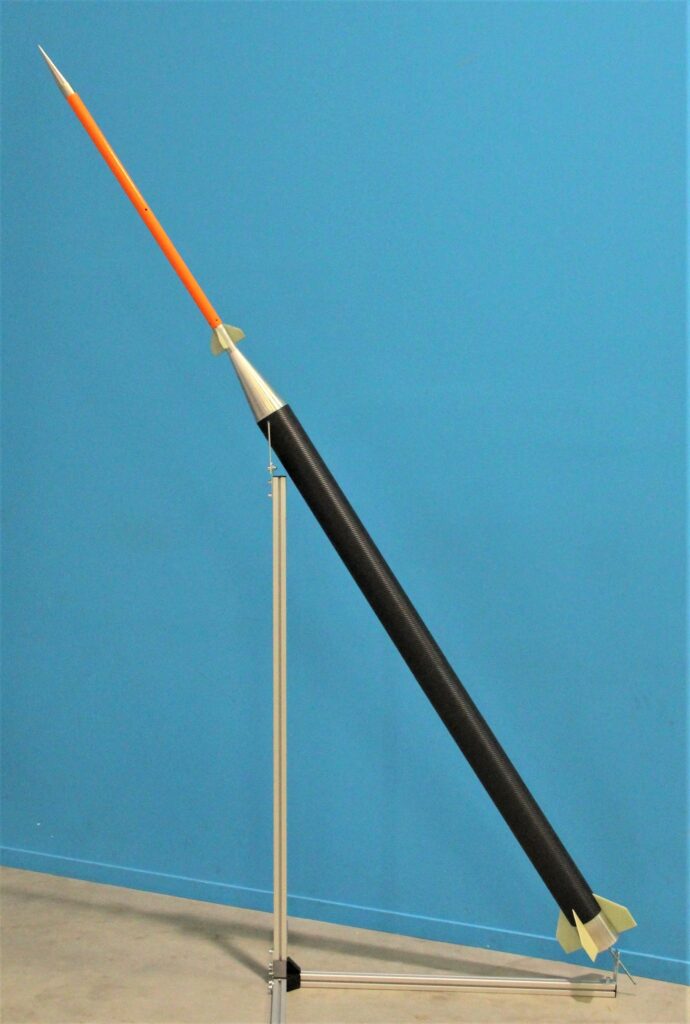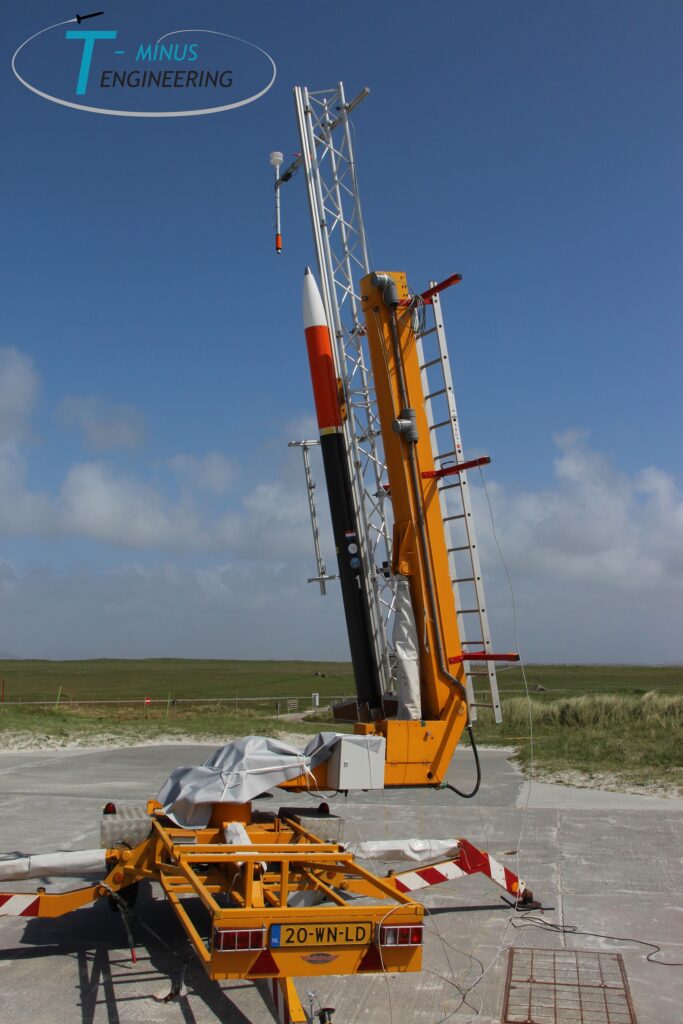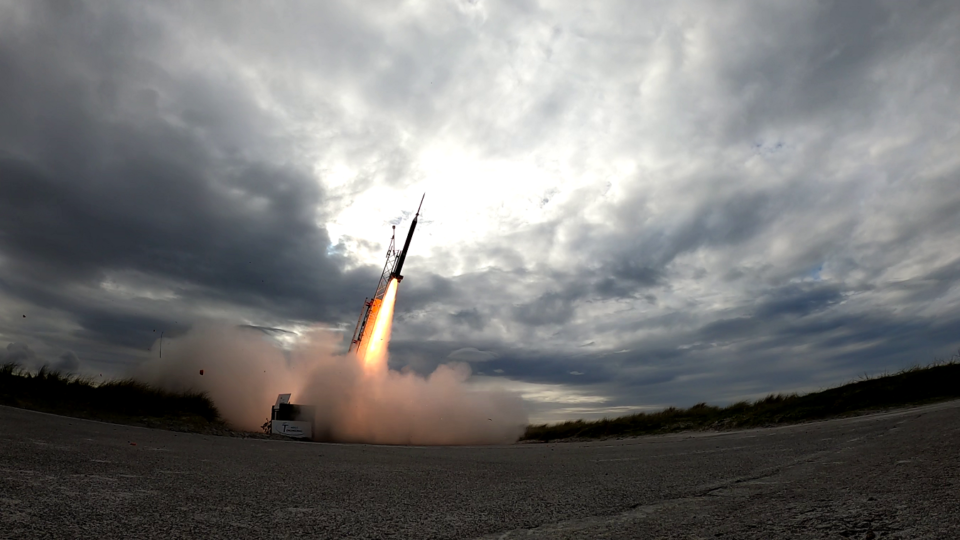Meet T-Minus Engineering: from a eureka moment in a van to the forefront of space tech. They’re the young engineers turning advanced rocketry into child’s play, making the cosmos a playground for education, science, and beyond. Ready to see how they launch not just rockets, but dreams? Read our interview with them here.
In the dynamic field of space innovation, Dutch company T-Minus Engineering was founded by four ambitious members of Delft Aerospace Rocket Engineering: Roel Eerkens, Hein Olthof, Eric Smit and Mark Uitendaal. They were involved in a project called Stratos, a record breaking rocket that was launched from Esrange Space Center in Sweden in 2009. The company was founded with a vision to transcend the limitations of conventional sounding rockets by integrating advanced technologies.
“In the van, during the 3.000-km road trip from Delft in the Netherlands to Esrange in Sweden, the idea arose to set up a company“
in which the multidisciplinary team could continue to develop rocket technology, says Hein, highlighting the entrepreneurial spirit that drove this pioneering venture.
Underlying T-Minus Engineering’s innovation is a range of unique small but highly capable rocket systems, including DART, RocketDrone, Dronesnapper and Kingfisher, customized for various markets such as education, science and defense.
“Our systems are unique for their small size and high capabilities, as well as their ease of use“
explains the representative, underscoring the company’s commitment to making space more accessible. This ethos extends to the education sector through projects like CanSat, which inspire the next generation of scientists and engineers. A rocket launch is inspiring in itself.
“We enable high school students as well as university students and scientists to launch their self-developed experiment with real rockets”
Hein says, highlighting the transformative effect of these initiatives. The educational programs have been running for 12 years and many of the students are making careers in the space industry.
Technological advancement plays a central role in T-Minus Engineering’s mission, with miniaturization and commercialization at the forefront.

“We realized early on that electronics, sensors and systems are becoming smaller and lighter”
notes Hein, showing how adept the company is at leveraging these trends to develop efficient and cost-effective solutions for aerospace. This approach not only democratizes access to space but also promotes economies of scale, taking the aerospace sector into a new era of exploration and discovery. It also provides opportunities for universities to experiment with their own projects, one of them in collaboration with KTH – Royal Technology Institute of Technology Stockholm.
The strategic partnership with Esrange Space Center in Sweden is an example of T-Minus Engineering’s visionary growth strategy. Esrange, located in the Auroral Oval, offers a unique vantage point for studying atmospheric phenomena and aligns with the company’s scientific aspirations.
“Esrange seems far away from Delft, but it is actually easily accessible, and the infrastructure in Esrange is very suitable to house our products”
Hein highlighting the synergies between the two entities. back on the company’s journey, Hein shares moments of pride and achievement, from the successful launch of rockets to key contributions to NASA’s InSight mission to Mars. These milestones highlight T-Minus Engineering’s central role in advancing space exploration and commitment to sustainability, as evidenced by their contributions to global climate and weather modelling.
“Observations from space by satellites allow us to see the big picture of weather systems, greenhouse gases and the hole in the ozone layer.”
However, satellites are not well suited to provide a complete profile of the atmosphere from ground to space. Phenomena such as coupling between different atmospheric layers play an important role in large and long-term weather systems. The chemical composition of the atmosphere, including different gases, ions, electrons and aerosols (small particles) also play an important role.


“In recent years, for example, we have seen a large increase in very high clouds around 80 km altitude (Polar Mesospheric Clouds, also called Noctilucent clouds). Where do they come from? What effect do they have? To study these phenomena, so-called in-situ measurements are needed.”
Looking ahead, T-Minus Engineering is not only expanding its footprint in the defense sector, but is also exploring the field of satellite launchers.
“Currently, we are also entering the defense market with ballistic radar targets.“
In addition, we have preliminary ideas to start developing a satellite launcher, Hein reveals, indicating that the company has ambitious plans to expand its influence in key sectors.
There is so much to do and to discover. T-Minus Engineering’s journey from a visionary road trip to a major force in the aerospace sector illustrates a relentless pursuit of innovation and excellence. With a keen eye on sustainability and the democratization of space exploration, the company is poised to continue breaking barriers, inspiring future generations and contributing to vital climate and weather modelling from the edge of space.
